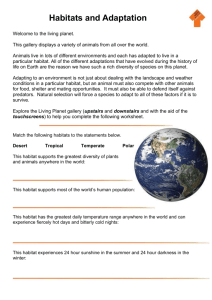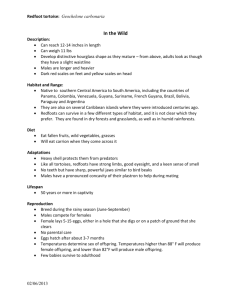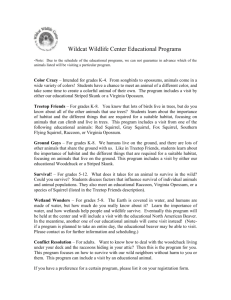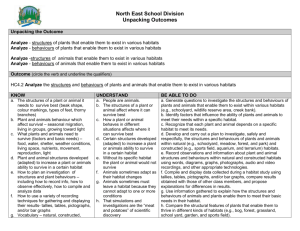Week 6- I see a Kookaburra
advertisement
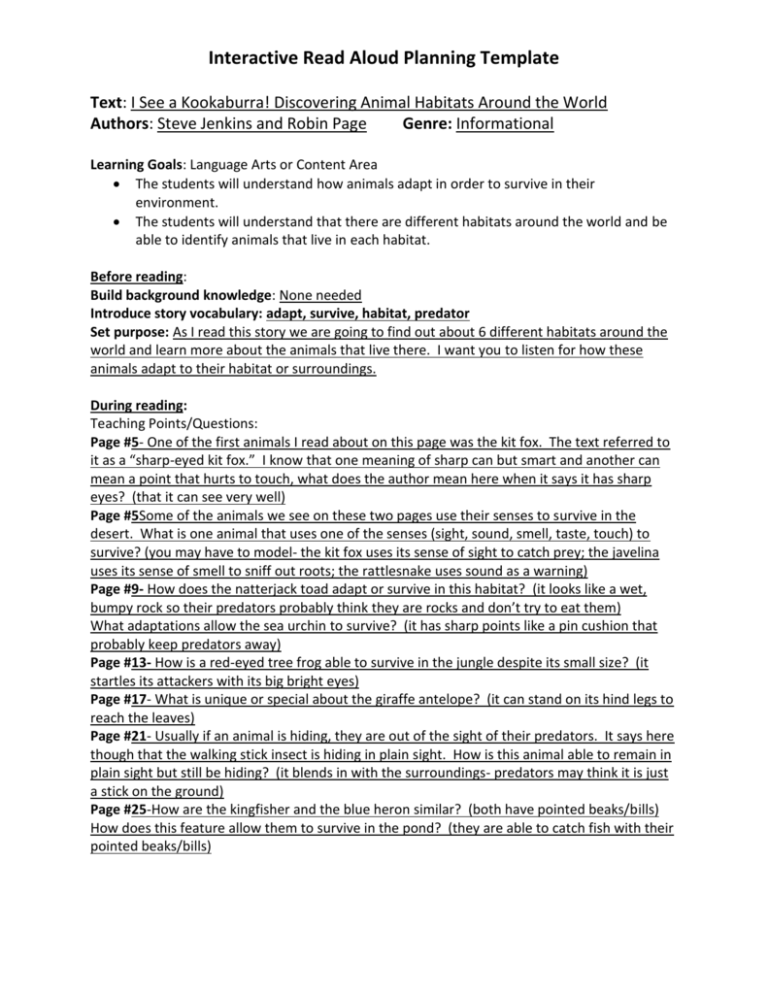
Interactive Read Aloud Planning Template Text: I See a Kookaburra! Discovering Animal Habitats Around the World Authors: Steve Jenkins and Robin Page Genre: Informational Learning Goals: Language Arts or Content Area The students will understand how animals adapt in order to survive in their environment. The students will understand that there are different habitats around the world and be able to identify animals that live in each habitat. Before reading: Build background knowledge: None needed Introduce story vocabulary: adapt, survive, habitat, predator Set purpose: As I read this story we are going to find out about 6 different habitats around the world and learn more about the animals that live there. I want you to listen for how these animals adapt to their habitat or surroundings. During reading: Teaching Points/Questions: Page #5- One of the first animals I read about on this page was the kit fox. The text referred to it as a “sharp-eyed kit fox.” I know that one meaning of sharp can but smart and another can mean a point that hurts to touch, what does the author mean here when it says it has sharp eyes? (that it can see very well) Page #5Some of the animals we see on these two pages use their senses to survive in the desert. What is one animal that uses one of the senses (sight, sound, smell, taste, touch) to survive? (you may have to model- the kit fox uses its sense of sight to catch prey; the javelina uses its sense of smell to sniff out roots; the rattlesnake uses sound as a warning) Page #9- How does the natterjack toad adapt or survive in this habitat? (it looks like a wet, bumpy rock so their predators probably think they are rocks and don’t try to eat them) What adaptations allow the sea urchin to survive? (it has sharp points like a pin cushion that probably keep predators away) Page #13- How is a red-eyed tree frog able to survive in the jungle despite its small size? (it startles its attackers with its big bright eyes) Page #17- What is unique or special about the giraffe antelope? (it can stand on its hind legs to reach the leaves) Page #21- Usually if an animal is hiding, they are out of the sight of their predators. It says here though that the walking stick insect is hiding in plain sight. How is this animal able to remain in plain sight but still be hiding? (it blends in with the surroundings- predators may think it is just a stick on the ground) Page #25-How are the kingfisher and the blue heron similar? (both have pointed beaks/bills) How does this feature allow them to survive in the pond? (they are able to catch fish with their pointed beaks/bills) After reading: Comprehension focus: In this text we learned about various animals and how they adapt to their habitats. Think about one animal that you learned about from this text. Share with your partner the habitat in which they live and how they are able to survive in that environment. Vocabulary review: _Review the 4 words mentioned earlier by having the students share a sentence with their partner using the word in the correct context-how it was used in the story. Extension Idea: In the back of the text there is additional information on each of the animals mentioned in the story. The animals are grouped by habitat. You could provide the students with a copy of the information or type up the information to share with the students. (just make sure to credit the source). Divide students into 5 groups. Each group will be given a specific habitat. Students can create a chart or some other representation that contains the names of the animals in that habitat and how they adapt in order to survive. You could model one habitat for them. Go through and create a chart like the one below and leave up on an anchor chart for them to refer back to. This is just one idea- you can do a variety of activities with the information. Habitat: Desert Animal Adaptation Kit fox Hunts at night; has sensitive hearing to hear mice or other animals moving in the dark; runs very fast Long-nosed bat Comes out at sunset to eat; feeds on nectar from desert plants and flowers Trapdoor spider Hides underground and runs out to catch insects as they walk by Diamondback Has heat-sensitive pits that detect mice and other small rattlesnake mammals; warns away predators by using its rattle Elf owl Protected by the sharp spines of the cactus in which it lives Javelina Good sense of smell to find food Kangaroo rat Can go its entire life without water; moves very quickly Gila monster Stores fat in its tail and can go months without eating in the winter; poisonous

